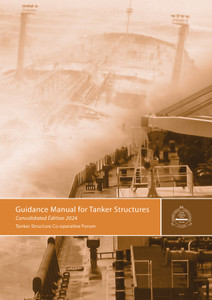
This publication provides guidance on how to remain within Classification Society limits when loading and discharging bulk carriers, in order to reduce the likelihood of over-stressing the ship's structure.
This publication outlines how to stay within Classification Society specified limitations and avoid over-stressing a ship’s structure when loading and discharging bulk carriers. It looks at the loads that affect a ship’s structure and the structural strength limitations that are imposed by a ship’s Classification Society, with a particular focus on:
- Loads and hull structure
- onboard loading guidance information
- planning and control of cargo loading and unloading operations
- potential problems
- ballast exchange at sea.
Executive Summary
This publication is intended to provide the shipping community with guidance and information on the loading and discharging of bulk carriers to remain within the limitations as specified by the classification society to reduce the likelihood of over-stressing the ship’s structure.
The loads that affect the ship’s structure are generally discussed with special reference to the structural strength limitations imposed by the ship’s classification society. The process of planning and controlling cargo operations is addressed with special reference to the derivation of the loading and unloading plans and the requirements for ship/shore communication.
A review of the potential problems that could be encountered during cargo operations is presented. Guidance is given on the measures that should be taken to monitor and control cargo and ballasting operations in order to reduce the possibility of over-stressing the ship’s structure.
Acknowledgement
Disclaimer
Executive Summary
1. Introduction
2. Loads and Hull Structure
3. Onboard Loading Guidance Information
4. Planning and Control of Cargo Loading and Unloading Operations
5. Potential Problems
6. Ballast Exchange at Sea
IACS
Dedicated to safe ships and clean seas, IACS makes a unique contribution to maritime safety and regulation through technical support, compliance verification and research development. More than 90% of the world’s cargo carrying tonnage is covered by the classification design, construction and through-life compliance rules and standards set but the twelve Members Societies of IACS.
IACS is a not for profit membership organisation of classification societies that establish minimum technical standards and requirements that address maritime safety and environmental protection and ensures their consistent application. It carries out this responsibility through its panels, expert groups and project teams and provides a Quality System Certification Scheme (QSCS) that its Members comply with, as an assurance of professional integrity and maintenance of high professional standards. IACS is recognized as the principle technical advisor of IMO.
- Number of Pages:
- 62
- ISBN:
- 9781856099301
- Published Date:
- August 2020
- Binding Format:
- Paperback
- Book Height:
- 230 mm
- Book Width:
- 160 mm
- Weight:
- 0.6 kg
- Author:
IACS
- Preview:
- Yes
- Publication Date:
- August 2020
 Witherbys.com
Witherbys.com





